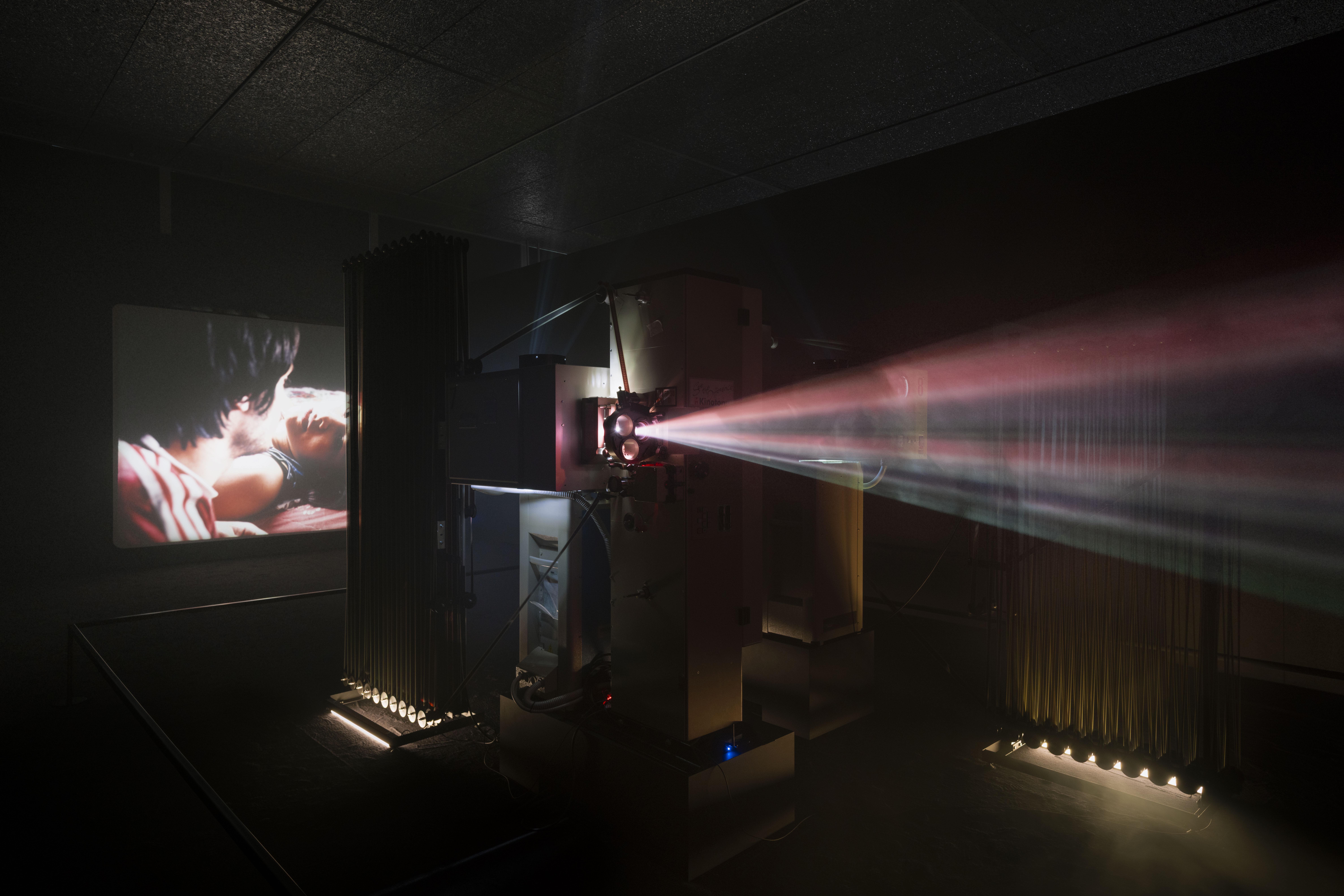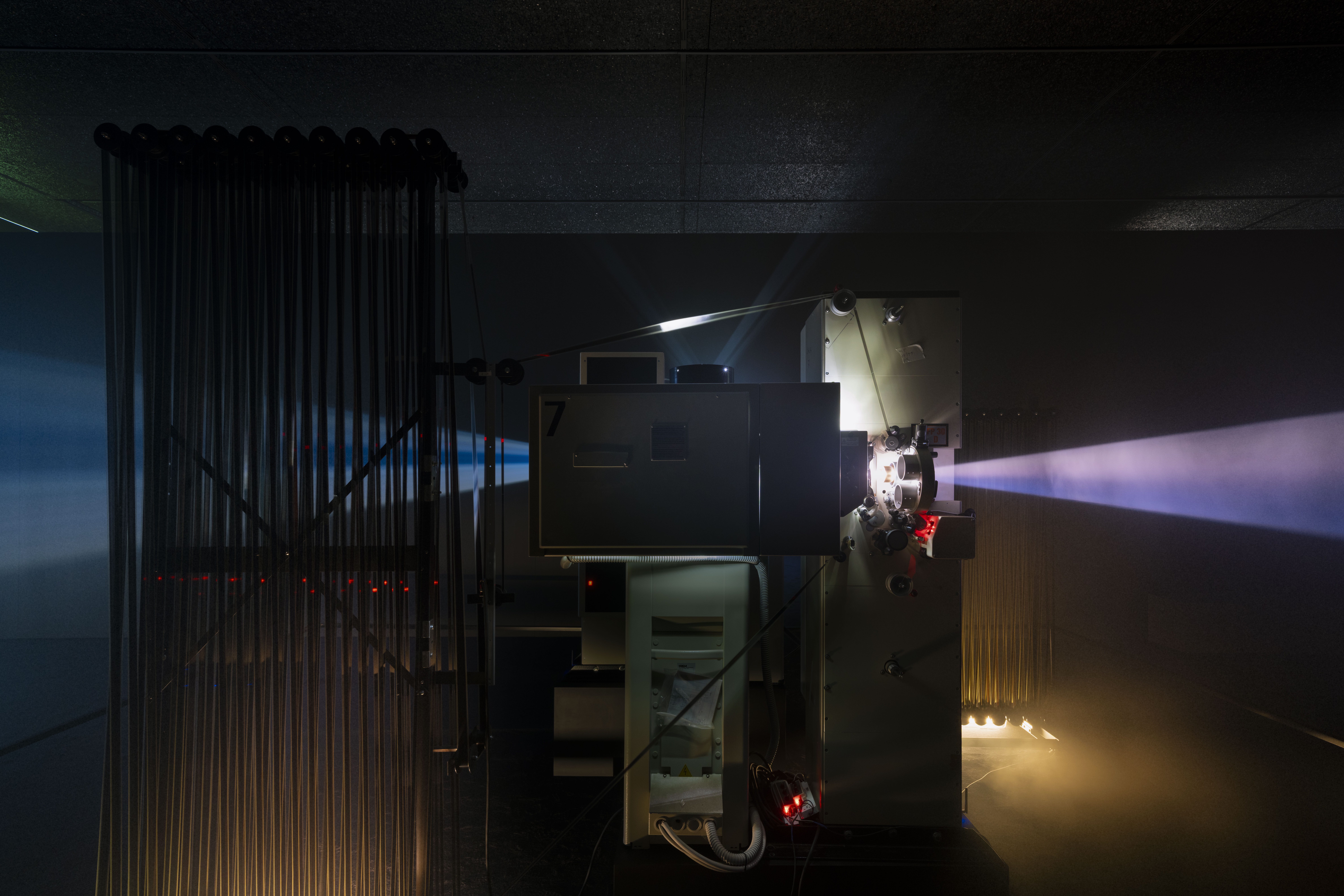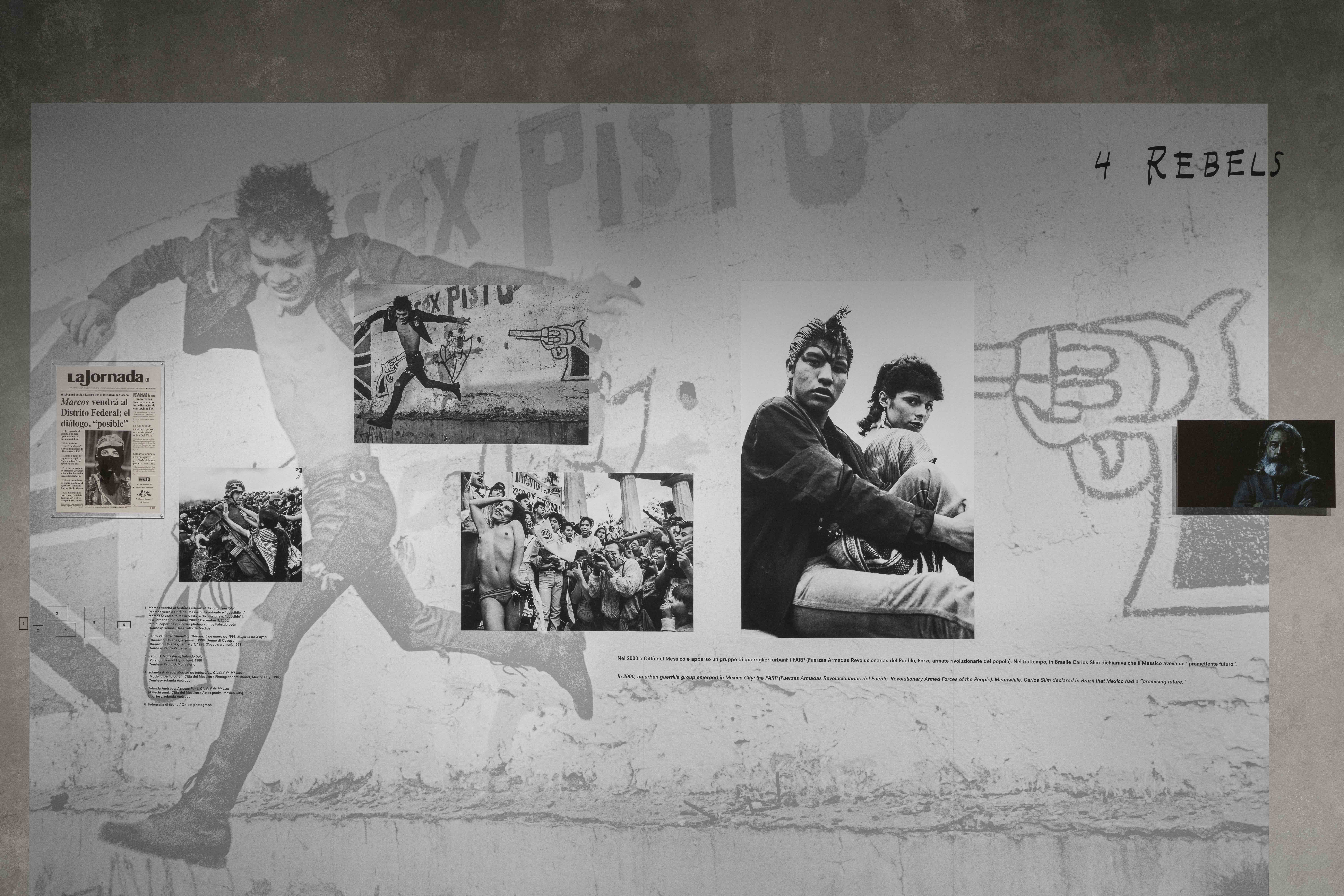At the opening of Sueño Perro, Alejandro G. Iñárritu’s Fondazione Prada show, the artist described the difficulty of sourcing and managing the nine 35 mm analogue projectors that were used to screen the preserved film stock on display. These machines are hulking and a bit fantastic to see in operation–they look more like props than technology. Iñárritu, the director behind Birdman, Babel, and Biutiful, mentioned that the machines’ operators, much like the mechanisms themselves, are either dead or dying. It’s striking to realize that the same moving images once produced by strips of celluloid whipping past a beam of light have now been miniaturized into multicolored LEDs.
The images in Sueño Perro are therefore fragile ones, not only in their content but in their very existence. One clumsy step in the dark and a scene could be torn, a channel jammed, a series of frames lost to history. So when I saw a small trickle of smoke appear in the conical projection of light, I panicked. As I was craning my neck to find a docent in the dark rooms, really making sure that I wasn’t smelling anything burning, I instead discovered a clever addition to the scenography: a compact smoke machine. The cloudiness it created made the light streaming from the lens seem tangible. As visitors ducked under projector beams, careful not to let their shadow invade the image, an inescapable connection to the production of the image became present in the room.

The video works were born from more than a million feet of celluloid preserved from Iñárritu’s 2000 film Amores Perros. Originally left to be discarded, the reels were picked up by the National Autonomous University of Mexico (UNAM) archive and saved for the last two and a half decades. The original film tells the story of a group of people whose lives are connected through a tragic car crash in Mexico City at the turn of the century. Through the film, the characters traverse its aftermath against the social and political landscape of the city.
Thus, the subject matter in Sueño Perro is marked with the same grit–the content doesn’t stray from the violence and perversity of its source material. One unshakeable moment from the exhibition is a room where two projections are seen on adjacent walls. In one, a man is pushing a tiny white dog on a city street with colorful shop signs illuminating the scene. In the other, the same man, with crazed eyes, wields a gun and threatens two hostages before eventually turning the gun on himself. When he pulls the trigger, the scene cuts abruptly to dogs eating from their bowls.

The juxtaposition of violence against banality puts into question how much visual information is really needed to extract truth. The hum of the projector underscores that instability in knowing: the machine itself testifies to the image’s mediation. Here, Iñárritu does not ask viewers to believe in the truth of the image, but to participate in its construction, to feel the slippage between representation and reality.
It’s a far cry from the frictionless image culture of the present. David Lynch once chastised the phone as the worst possible screen on which to watch a film; by contrast, Iñárritu restores gravity to the image’s delivery system. The audience does not consume the work passively, as on a device, but encounters it as a constructed and contingent event–a flicker of light that might at any moment go dark.

This emphasis on mediation is echoed in Mexico 2000: The Moment that Exploded, a companion work by Mexican writer and journalist Juan Villoro. Through narrated chapters about Mexico City at the time of Amores Perros, Villoro situates Iñárritu’s violence within a recognizable social moment. The images on display are not fictional horrors but historical fragments–plucked from reality, cut, and re-projected. Film, the exhibition reminds us, is never wholly fact or wholly fiction: it is an interpretation of time itself.
Ultimately, Sueño Perro argues that images do not arrive to us as easily as we may believe. They are mediated through fragile apparatuses, institutional preservation, and embodied spectatorship. Much like violence–an excess of response to the pressures of reality–the image is an excess of time, a byproduct of it. Iñárritu’s installation turns that fragility into a meditation on the weight of the image: to truly see one is to feel its mortality.
—
Alejandro G. Iñárritu is a five-time Academy Award-winning Mexican director, screenwriter, and producer known for creating psychological dramas focused on the human condition. His films include Amores Perros (2000), 21 Grams (2003), Babel (2006), Biutiful (2010), Birdman (2014), The Revenant (2015), and Bardo (2022). In 2006, Iñárritu became the first Mexican filmmaker to win the Best Director Award at the Cannes Film Festival for Babel, as well as the first to be nominated for director or producer in the history of the Academy Awards.
Annalise June Kamegawa is a writer and artist based in Milan. She was a Fulbright scholar in the creative arts, an artist-in-residence at Fabrica Research Centre, and a writer-in-residence with Spike and the Salzburg Kunstverein.




